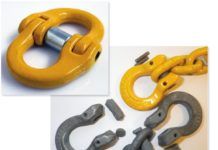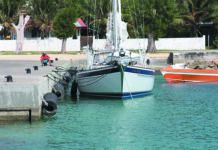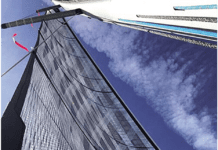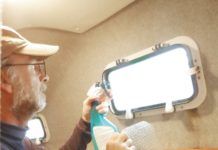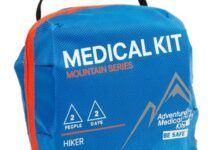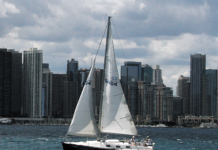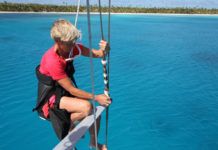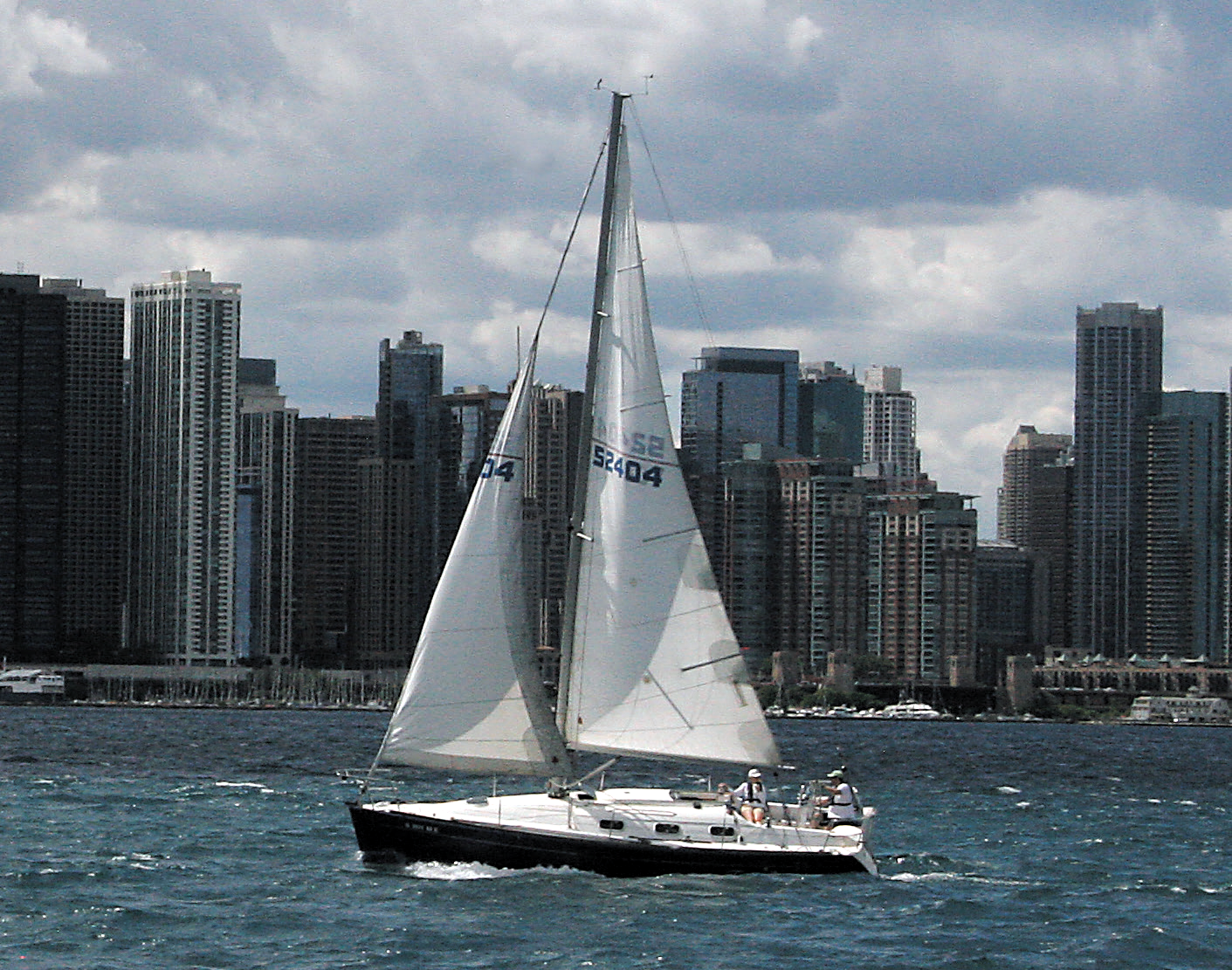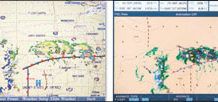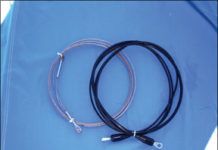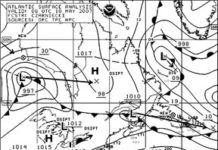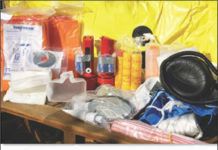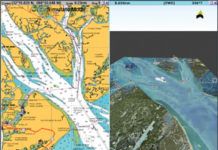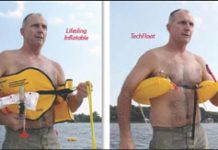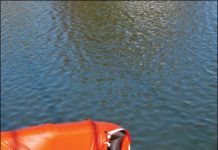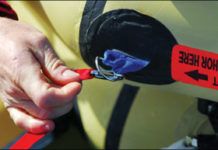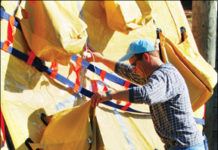Marine Satellite Weather Services Head-to-Head Test 2007
Marine electronics companies have joined forces with the twonationally known satellite radio providers, Sirius and XM, to provide weather information and weather maps to the mariner for moderate monthly fees. In this test, Practical Sailor takes a hard look at who provides the best satellite weather service, including weather radar, geared toward cruising sailors at the best overall price. We reviewed the XM marine weather forecast using a Garmin GDL 30A weather receiver linked to a 10.5-inch Garmin 3210 multifunction display. The Sirius system was tested with a Raymarine SR100 weather receiver providing the signal to Raymarines E120 multi-function, 12-inch display.
Mailport: 06/07
I have little space to stow a life raft on my 30-foot Baba. On my three trips to Bermuda, I rented a valise-packed raft, tied it down, and used it as a helmsman seat. For liability reasons, most life raft manufacturers oppose sitting on the raft, but cannot explain why it is an unsafe practice. I have read too many stories of life rafts being swept off deck mounts, plus, I do not have a good place for a deck mount. In my view, there is no downside to a valise-packed raft, especially a vacuum-packed one from Winslow. I am considering one of theirs, and they will pack it to spec so I can fit it in a cockpit locker (on top of course). Most life raft makers officially support the valise for liability reasons. My only suggestion to Winslow is to include a meter of some type inside the vacuum packaging so that any moisture intrusion can be detected.
Please Dont Take Away My Iron Mike
The U.S. Coast Guard, stretched to the gills by an aging fleet and Homeland Security demands, is causing a bit of a stir among cruising sailors. Citing the sorry condition of its high-frequency (HF) radio broadcast equipment, the Coast Guard is asking for public comment on the importance of its HF weather broadcasts. The wording of the request suggests that if nobody is using these weather forecasts, why bother upgrading the equipment?
Six-Man Life Raft Survival Equipment
For Practical Sailors six-man life raft test, the examiners looked at eight life rafts suitable for a cruising sailboat with far horizons: the DSB 6-ISAF, the Elliot 6-SOLAS, the Switlik MD-3, the Switlik SAR-6 MKII, the Viking Rescyou, the Viking Rescyou Pro, the Winslow Ocean Rescue, the Zodiac Class Ocean ISAF. A close look at the survival gear that each life raft manufacturer provides reveals that its generally left up to the owner to provide the gear that is more likely to expedite rescue (like a 406-EPIRB) or keep him alive (like a Katadyn hand-operated wate maker).
Navigation Software Test: Raymarine RayTech RNS Version 6.0
Practical Sailor likes the ability to use Navionics electronic charts, but it’s disappointing that Raytech does not support GPX data (a popular method of exchanging routes and waypoints without confusing chart datum), nor does it support freely available S-57 vector charts, the standard for government vector charts. These are both features that Practical Sailor values highly. No doubt, Raymarine’s Raytech RNS Version 6.0 has some dazzling features. But, like a lot of marine navigation programs, it is confusing to use, leading to underutilization of a great navigator’s tool.
Throwable Man Overboard Aids
In an era when the ordinary life ring is being replaced by a wide range of improved rescue devices, Practical Sailor tested several rescue products that boast unique advantages as man-overboard flotation and retrieval aids. We gathered two throwable man-overboard devices that use automatically inflated chambers for flotation-the TechFloat from Survival Technologies and the Lifesling Inflatable from West Marine-and one made of expanded polyethylene foam-the Personal Retriever. Each comes with floating line; the bitter end of each is intended to stay in the hands of the rescuer or be tied to the vessel. Only the TechFloat is a certified U.S. Coast Guard (USCG) personal flotation device. We also tested a fourth throwable MOB aid-the Rescue Stick by Mustang Survival. Its a different animal than the other three, but shares many of the same features.
Six-Man Life Raft Test
How to choose a life raft? That is the question we answered in Part I of this series (“Choosing a Life raft,” March 2007). For Part II, we conducted a series of tests that mirrored those carried out by the U.S. Coast Guard and other certifying agencies. We asked manufacturers to send us six-man life rafts that they thought best suited a serious offshore sailor seeking a SOLAS life raft or its recreational equivalent. Six manufacturers responded to our request, sending a total of eight six-man life rafts: the 6-SOLAS from Elliot, the Switlik MD-3, the DSB ISAF, the Switlik SAR-6 MKII; the Viking RescYou (UKL), the Viking RescYou Pro (UKSL), the Winslow Ocean Rescue; and the Zodiac Class Ocean ISAF life raft. As it turned out, the life raft testers faced the very difficult task of distinguishing the best life rafts for cruising sailors among an outstanding field of entries.
Rhumb Lines: 04/07
At Practical Sailor, we approach every product review and test that we carry out with a high level of seriousness, and when it comes to safety gear, the level of responsibility is elevated a notch further. These are devices where the smallest detail can have grave consequences.
Life Raft Test Part I: Choosing a Life Raft
Our life raft test is carried out against the backdrop of relatively new marine safety standards. New criteria for life rafts for recreational boats have been established by the International Sailing Federation (ISAF) and the International Standards Organization (IS0). The Practical Sailor comparison features an in-depth look at eight life rafts: the DSB ISAF raft, Elliot SOLAS raft, Switlik MD-3 raft, Switlik SAR-MKII raft, Viking RescYou (UKL), Viking RescYou Pro (USKL), Winslow Ocean Rescue, and the Zodiac Class Ocean ISAF raft. As far as standards go, SOLAS is clearly top notch.
USCG: Time to Ditch Those 121.5/243 MHz EPIRBs
The U.S. Coast Guard instituted a ban on the use of both 121.5 and 243 MHz Emergency Position Indicating Radio Beacons (EPIRBs) on Jan. 1, 2007, in preparation for Feb. 1, 2009, when satellite processing of distress signals from all 121.5/243 MHz beacons will terminate.










